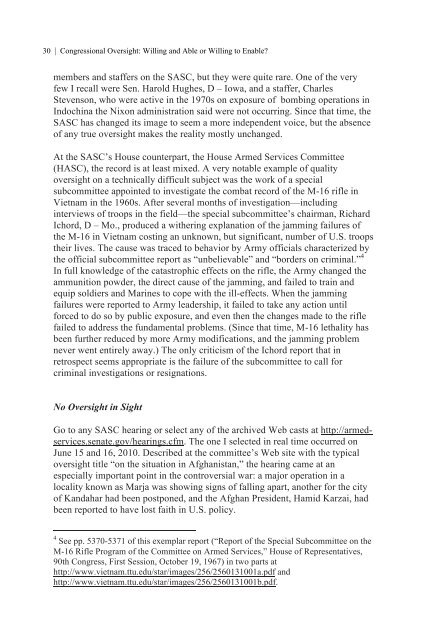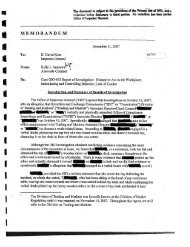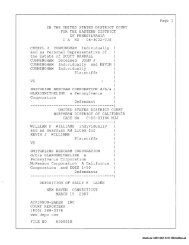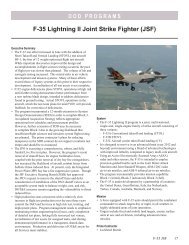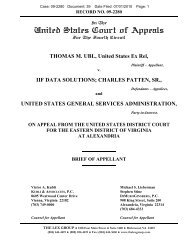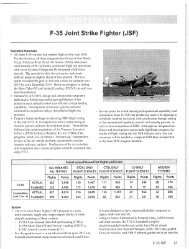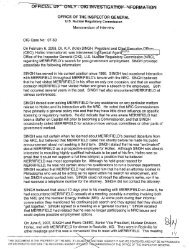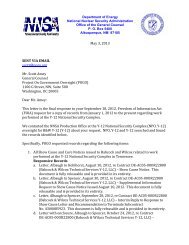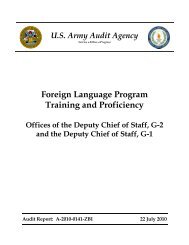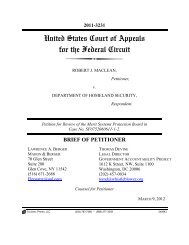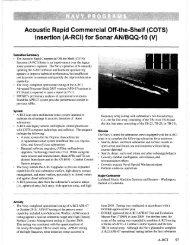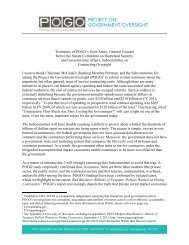The Pentagon Labyrinth
The Pentagon Labyrinth
The Pentagon Labyrinth
Create successful ePaper yourself
Turn your PDF publications into a flip-book with our unique Google optimized e-Paper software.
30 | Congressional Oversight: Willing and Able or Willing to Enable?<br />
members and staffers on the SASC, but they were quite rare. One of the very<br />
few I recall were Sen. Harold Hughes, D – Iowa, and a staffer, Charles<br />
Stevenson, who were active in the 1970s on exposure of bombing operations in<br />
Indochina the Nixon administration said were not occurring. Since that time, the<br />
SASC has changed its image to seem a more independent voice, but the absence<br />
of any true oversight makes the reality mostly unchanged.<br />
At the SASC’s House counterpart, the House Armed Services Committee<br />
(HASC), the record is at least mixed. A very notable example of quality<br />
oversight on a technically difficult subject was the work of a special<br />
subcommittee appointed to investigate the combat record of the M-16 rifle in<br />
Vietnam in the 1960s. After several months of investigation—including<br />
interviews of troops in the field—the special subcommittee’s chairman, Richard<br />
Ichord, D – Mo., produced a withering explanation of the jamming failures of<br />
the M-16 in Vietnam costing an unknown, but significant, number of U.S. troops<br />
their lives. <strong>The</strong> cause was traced to behavior by Army officials characterized by<br />
the official subcommittee report as “unbelievable” and “borders on criminal.” 4<br />
In full knowledge of the catastrophic effects on the rifle, the Army changed the<br />
ammunition powder, the direct cause of the jamming, and failed to train and<br />
equip soldiers and Marines to cope with the ill-effects. When the jamming<br />
failures were reported to Army leadership, it failed to take any action until<br />
forced to do so by public exposure, and even then the changes made to the rifle<br />
failed to address the fundamental problems. (Since that time, M-16 lethality has<br />
been further reduced by more Army modifications, and the jamming problem<br />
never went entirely away.) <strong>The</strong> only criticism of the Ichord report that in<br />
retrospect seems appropriate is the failure of the subcommittee to call for<br />
criminal investigations or resignations.<br />
No Oversight in Sight<br />
Go to any SASC hearing or select any of the archived Web casts at http://armedservices.senate.gov/hearings.cfm.<br />
<strong>The</strong> one I selected in real time occurred on<br />
June 15 and 16, 2010. Described at the committee’s Web site with the typical<br />
oversight title “on the situation in Afghanistan,” the hearing came at an<br />
especially important point in the controversial war: a major operation in a<br />
locality known as Marja was showing signs of falling apart, another for the city<br />
of Kandahar had been postponed, and the Afghan President, Hamid Karzai, had<br />
been reported to have lost faith in U.S. policy.<br />
4 See pp. 5370-5371 of this exemplar report (“Report of the Special Subcommittee on the<br />
M-16 Rifle Program of the Committee on Armed Services,” House of Representatives,<br />
90th Congress, First Session, October 19, 1967) in two parts at<br />
http://www.vietnam.ttu.edu/star/images/256/2560131001a.pdf and<br />
http://www.vietnam.ttu.edu/star/images/256/2560131001b.pdf.


